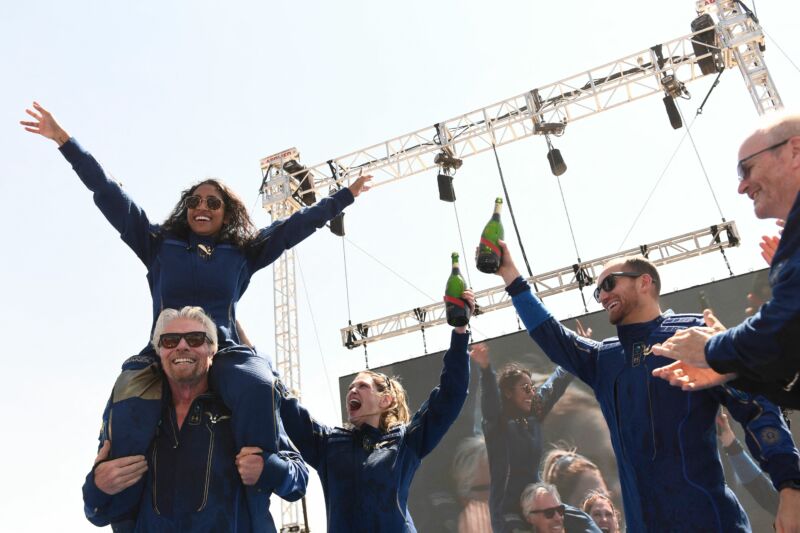
TRUTH OR CONSEQUENCES, N.M.—Sir Richard Branson basked in the late morning New Mexico sunshine on Sunday. Beaming his white, toothy grin for all to see, the 70-year-old adventurer looked resplendent in his blue flight suit as he stood alongside the pilots, Dave Mackay and co-pilot Mike Masucci, who had just rocketed him above 85 km.
“I have wanted to do this since I was a child,” Branson said. “But honestly, nothing could prepare you for the view of Earth from space.”
If you think Richard Branson’s space flight on Sunday morning was all about the pomp and simply served to feed the ego of a celebrity billionaire, you would not be wrong. Virgin Galactic hired Stephen Colbert to host the livestream, after all. R&B musician Khalid performed onstage following the mission. It was gaudy. It was showtime. It was absolutely a party.
But make no mistake, this flight was also historic.
A new era opened this weekend when Branson flew alongside Virgin Galactic employees Beth Moses, Sirisha Bandla, and Colin Bennett above 80 km, NASA’s definition of space. In doing so, these pilots and crew opened a future that is both full of promise and uncertainty. It now seems abundantly clear that spaceflight has changed forever.
During the last 50 years, the vast majority of human flights into space—more than 95 percent—have been undertaken by government astronauts on government-designed and -funded vehicles. Starting with Branson and going forward, it seems likely that 95 percent of human spaceflights over the next half century, if not more, will take place on privately built vehicles by private citizens.
It's a moment that has been a long time coming.
Starts with an X
Decades ago, the X Prize competition planted the seeds that ultimately germinated with Sunday’s flight.
An engineer and entrepreneur named Peter Diamandis created the competition in 1996, and the initiative invited teams to build a new generation of spacecraft. The first team to build a vehicle that could fly humans into space, and do it twice in a short period of time, would win $10 million.
Diamandis had grown up during the 1960s, falling in love with the Apollo era of exploration, and he believed when he reached adulthood that anyone could go into space. But that had not happened, and space remained the province of a handful of the world’s most wealthy nations, inaccessible to all but elite astronauts. By the 1990s, fewer than 300 people had gone to space, and all of them were employees of their nation’s space programs, military officers, or highly trained guests of those countries.
Diamandis sought to change this, taking inspiration from Charles Lindbergh, the famed pilot who first flew across the Atlantic Ocean. Lindbergh had chanced this crossing to win the Orteig Prize, a $25,000 reward offered by New York hotelier Raymond Orteig for the first pilot to fly nonstop between New York and Paris. Six men died in three crashes before Lucky Lindy’s feat in 1927 helped kick off the era of trans-Atlantic air travel. A couple of decades later, passenger air service was common. Diamandis hoped the X Prize might similarly stimulate human spaceflight.
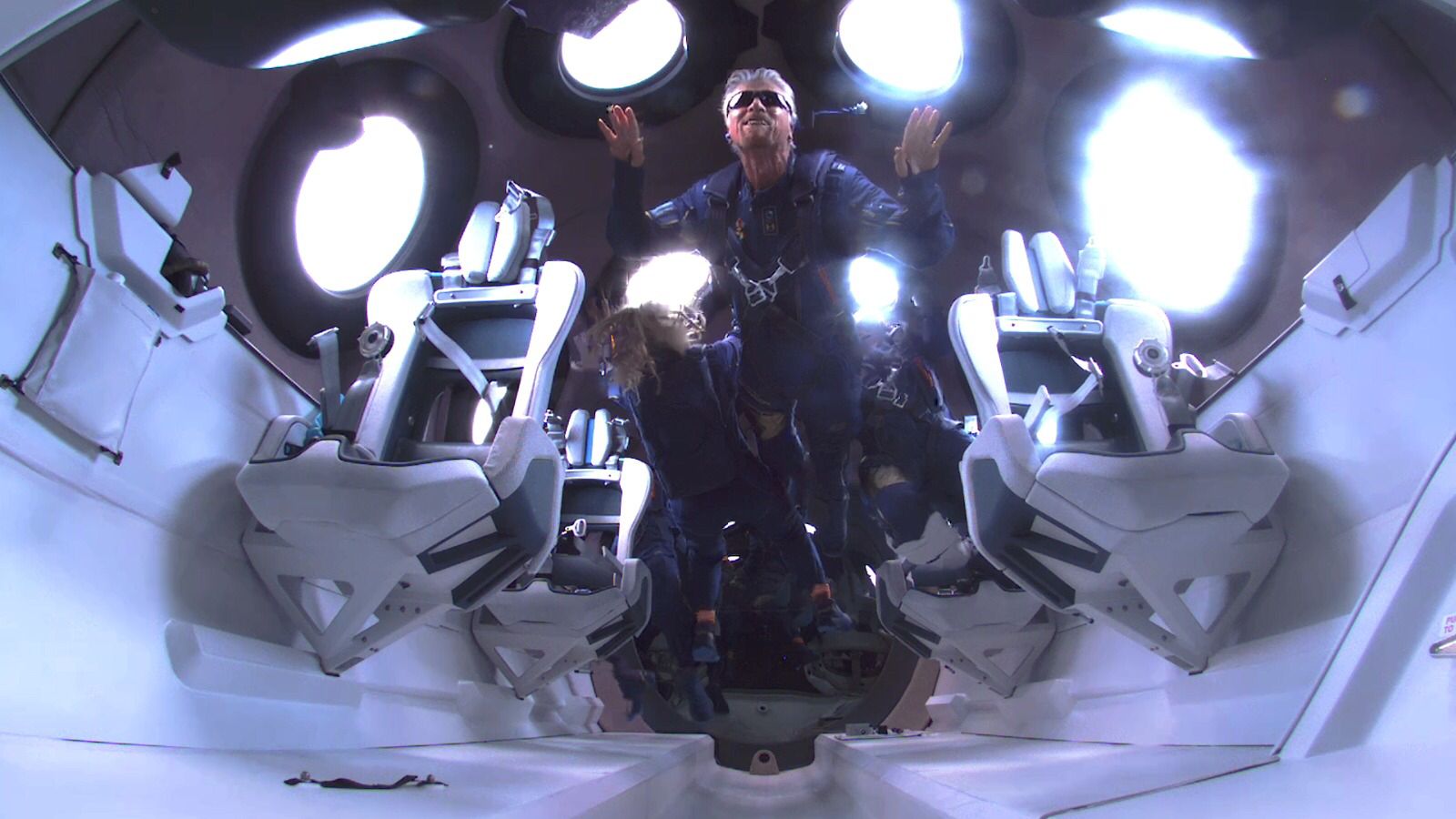 Sir Richard Branson enjoys microgravity on Sunday.Virgin Galactic
Sir Richard Branson enjoys microgravity on Sunday.Virgin Galactic VSS Unity burns its rocket motor.Virgin Galactic
VSS Unity burns its rocket motor.Virgin Galactic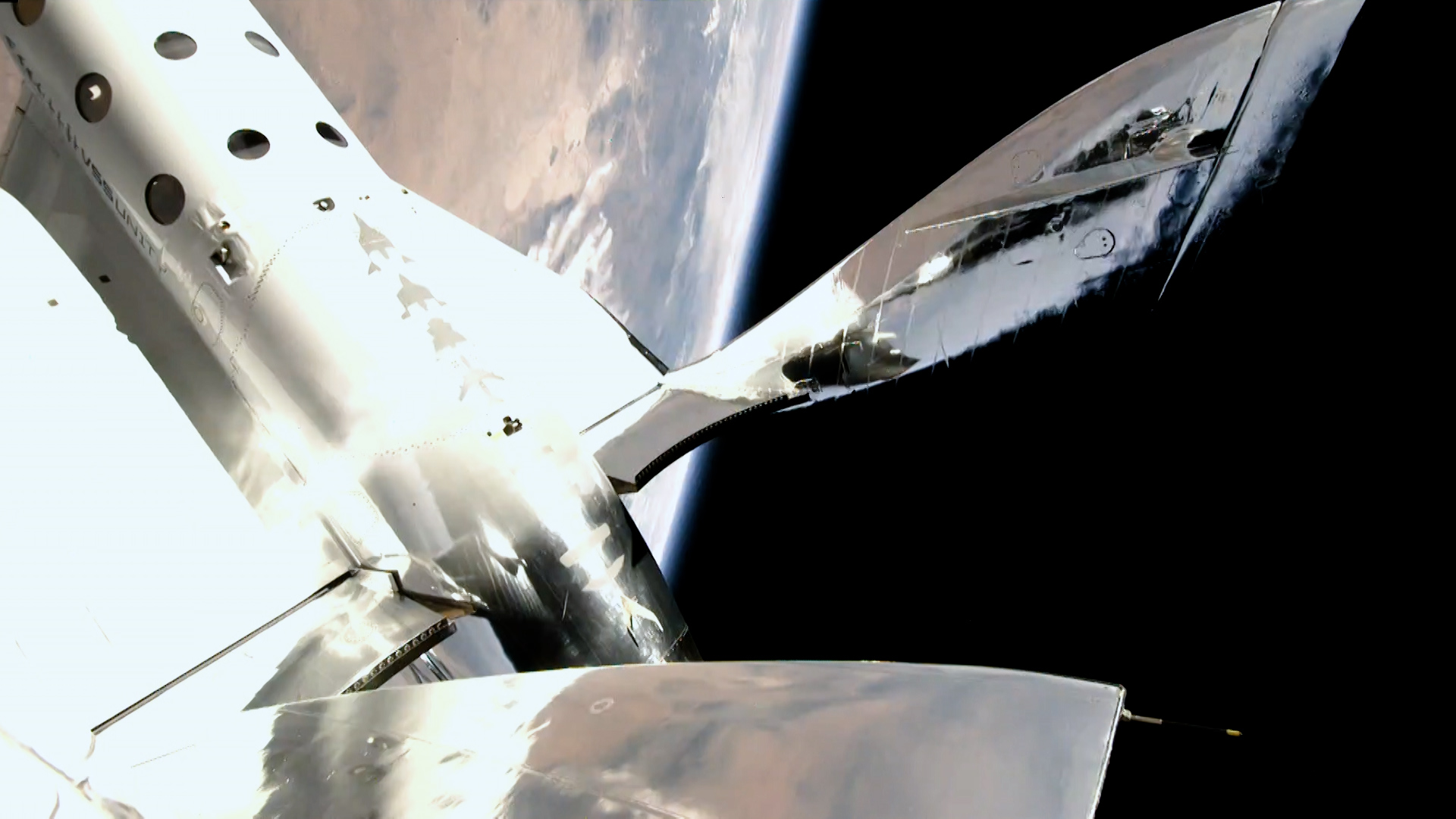 VSS Unity seen above 80 km.Virgin Galactic
VSS Unity seen above 80 km.Virgin Galactic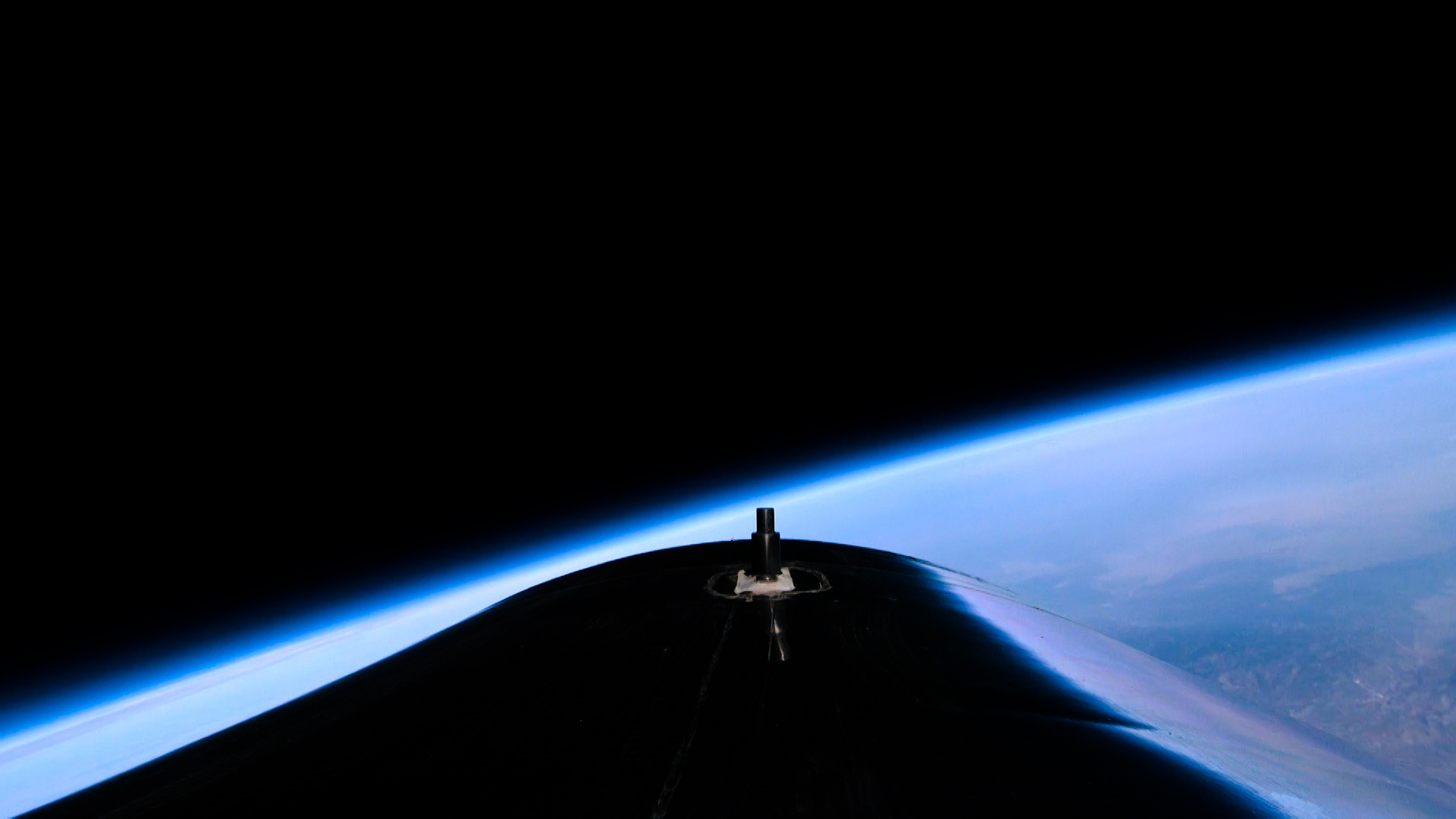 A view of the spacecraft's tail cone.Virgin Galactic
A view of the spacecraft's tail cone.Virgin Galactic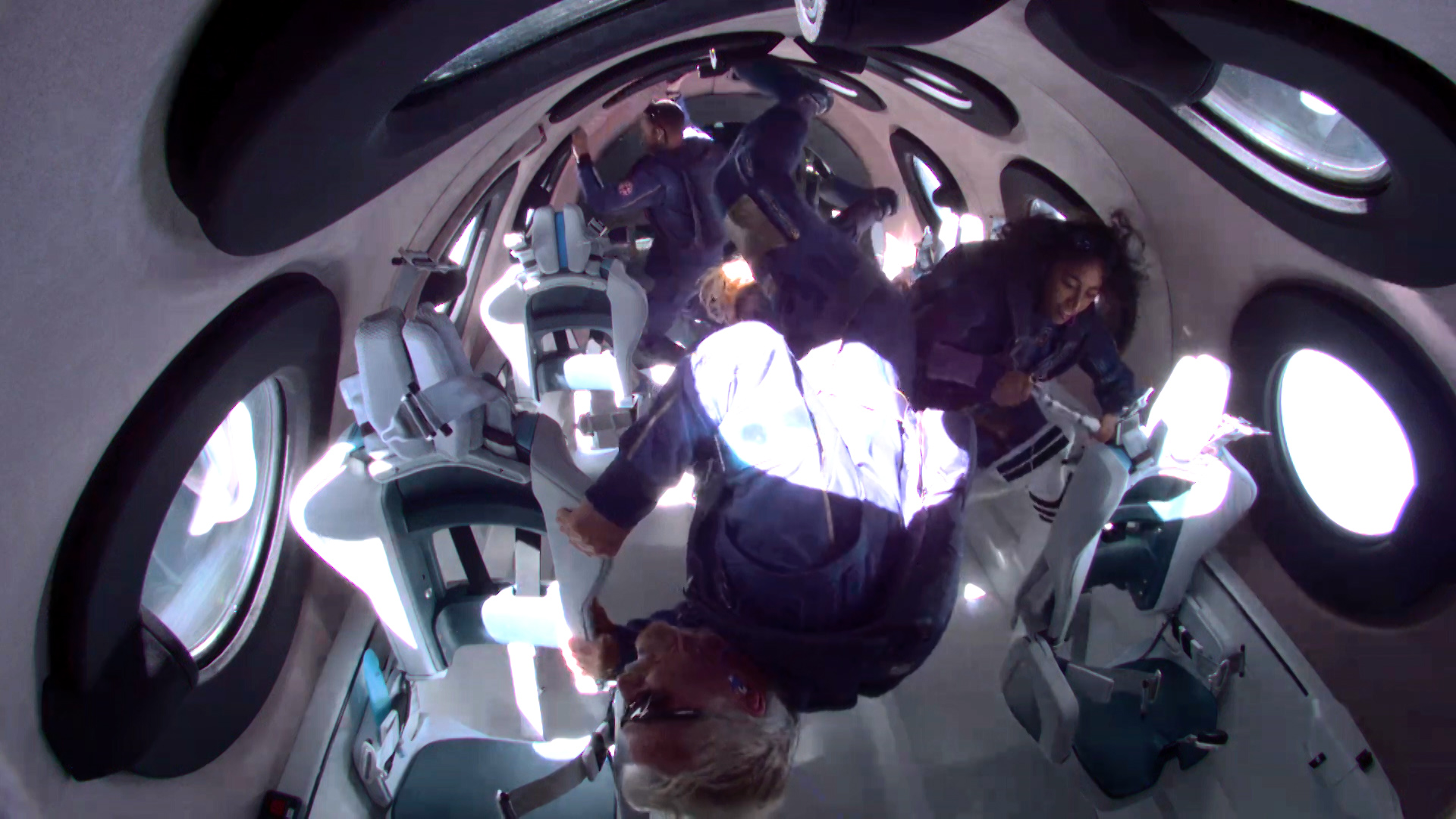 The crew having some fun.Virgin Galactic
The crew having some fun.Virgin Galactic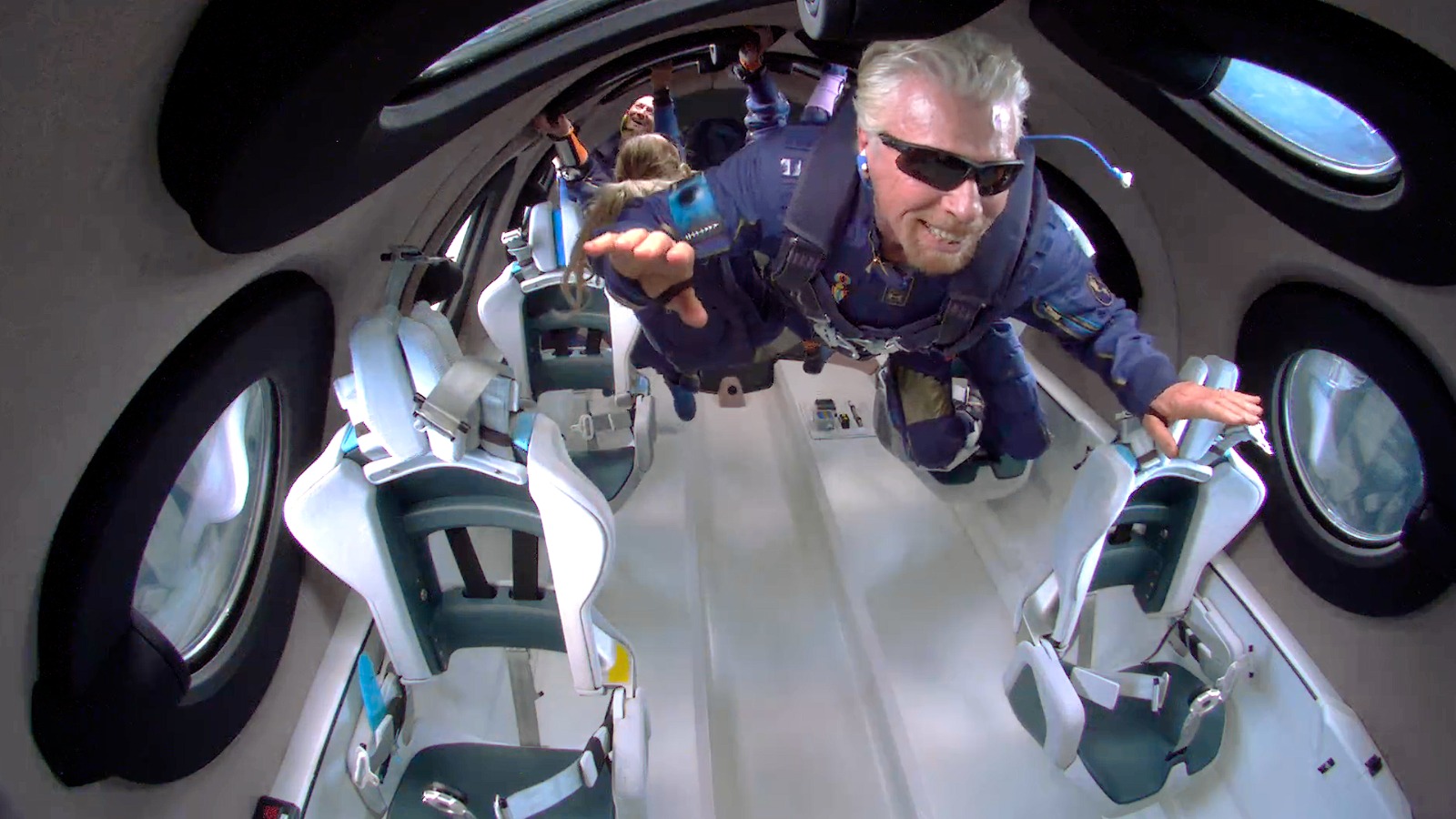 Flying, finally.Virgin Galactic
Flying, finally.Virgin Galactic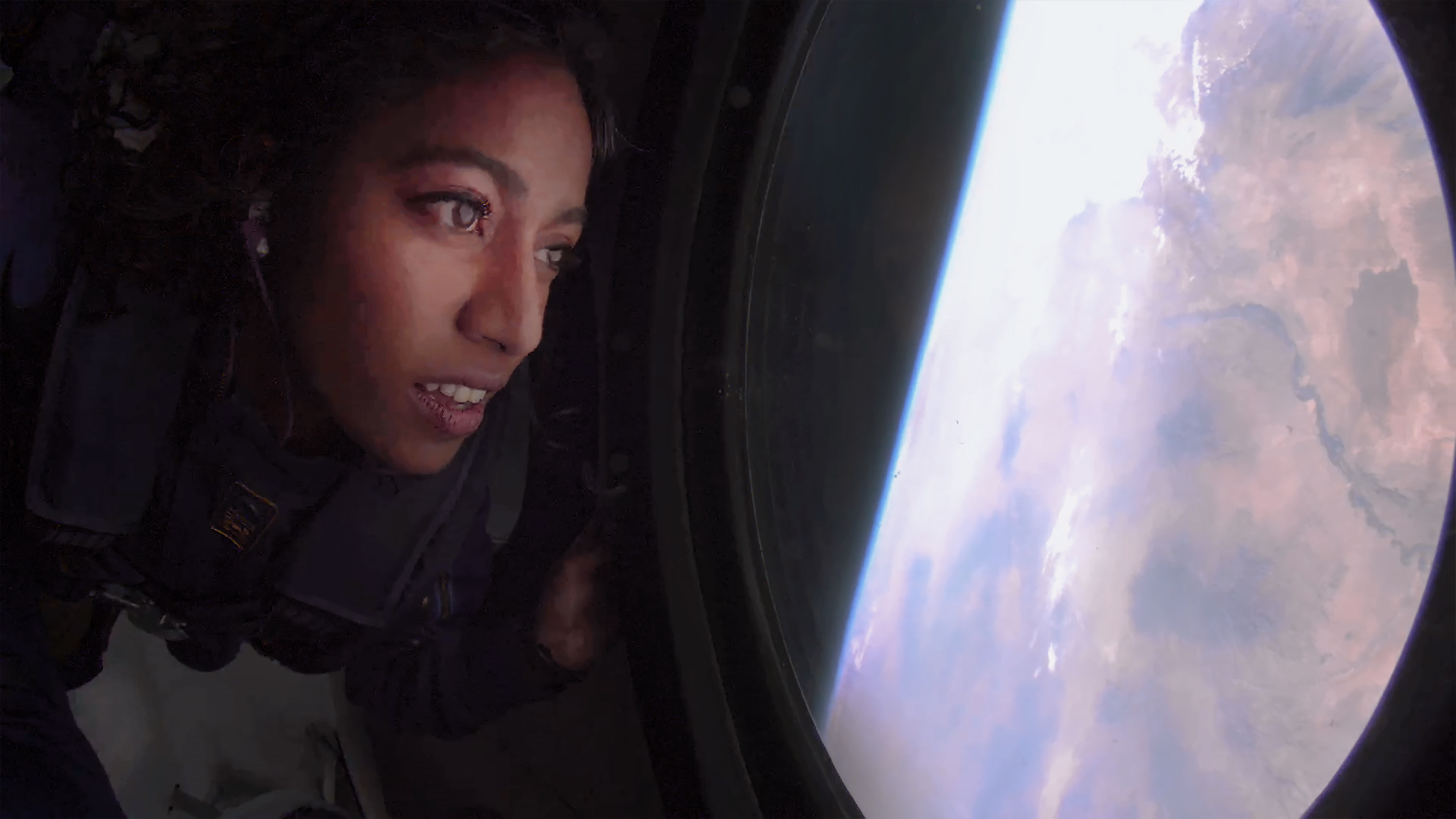 Sirisha Bandla enjoys the view.Virgin Galactic
Sirisha Bandla enjoys the view.Virgin Galactic
A team led by Burt Rutan would claim the X Prize eight years later, barely within the deadline. Rutan’s team built SpaceShipOne, a small rocket-powered vehicle dropped from an aircraft.
SpaceShipOne's feat proved inspirational to many people, including British marketer Richard Branson. Branson had long nurtured an appetite for extreme adventures and wanted to one day go into space himself.
But Branson is not an engineer and does not profess to be one. He initially assumed it would be relatively easy to scale the propulsion system from SpaceShipOne to a larger vehicle. This space plane could be flown by two pilots and carry six passengers, paying off eventually as a space tourism business. Branson founded Virgin Galactic with that goal in 2004, saying he himself would go to space only a handful of years later. Soon, the company began selling $250,000 tickets. But SpaceShipTwo was anything but easy, and building a larger and more powerful spacecraft was technically demanding. On top of those challenges, the process was also risky. Three employees of Rutan’s company, Scaled Composites, died in 2007 during a ground accident, and pilot Michael Alsbury died in 2014 during a test flight.
Virgin Galactic would finally reach space in late 2018, and the completion of two more test flights set the stage for Branson’s historic flight on Sunday. The journey had not taken a handful of years—it required nearly two decades. But a determined Branson persisted.
The lucky seven
Diamandis and Branson were not the only ones interested in opening space to more people. In the mid-1990s, as Diamandis founded the X Prize, video game developer Richard Garriott was dreaming about going into space himself. His father, Owen Garriott, had been a NASA astronaut who spent a few months on the Skylab space station in 1973 and later flew on the space shuttle.
But as a kid, Garriott needed glasses, so he wasn’t eligible to become an astronaut. Garriott went into video games instead, and the rest is history to many Ars readers. Yet, even as he developed the Ultima series, he never lost the space bug and kept track of the industry.
A few years into the X Prize competition, Eric Anderson and Garriott were sitting on his back porch in Austin, Texas. As the Sun dropped toward the horizon, the two discussed their disappointment at how slow things were moving since the competition kicked off. “We all thought that within one to five years, at most, these suborbital vehicles would be ready,” Garriott told Ars.
The two began discussing other ways to get into space more quickly. At the time, orbital flights by national space agencies were the only game in town. NASA had its space shuttle, which could fly seven people into orbit at a time, but the space agency wasn’t interested. Flying tourists on the shuttle? Too crass, NASA said.
Russia, then emerging from the Soviet era and fully embracing capitalism, was interested. But Garriott was told he would need to pay Russia $300,000 so the country’s space program could determine how much it would cost to train and fly commercial “tourists” on Soyuz to the Russian segment of the International Space Station. Garriott paid up, with the intent of being the first of these space tourists. He and Anderson founded Space Adventures to broker the flights.
Unfortunately, the dotcom collapse soon sapped some of Garriott's fortune from Ultima and other video games. Entrepreneur Dennis Tito, therefore, became the first person to finance his own trip into space after he launched on a Soyuz spacecraft in April 2001. Tito spent a week in space. Six other orbital tourists, including Garriott, would follow Tito on board a Soyuz to the space station.
The last mission came in 2009.
This is the “moment”
The promise of suborbital tourism is that it could expand space access to many, many more people. Whereas orbital flights required tens of millions of dollars and months of training, suborbital spaceflight costs a few hundred thousand dollars and needs only a few days of training.
Making good on this promise has been challenging. For much of the last decade, it seemed like spaceflights such as Branson’s were only a year or two away. But there were always setbacks, more technical issues to solve, more safety concerns to address. Time slipped away, and it seemed like the day may never come.
Nonetheless, behind the scenes, a furious race between Virgin Galactic and Jeff Bezos’ rocket company, Blue Origin, raged. Both were competing to build, test, and fly suborbital launch systems that would take paying customers to space. The race, of course, came down to the wire. After Jeff Bezos said he would fly into space on his New Shepard rocket on July 20, Branson moved up his flight, which had been planned for later summer. On Sunday, Branson won the first leg of this space tourism race by a mere nine days.
As Garriott sees it, we were all winners. “It’s very exciting to see either of them go to space, much less both of them,” Garriott said.
Coincidentally, it’s not just suborbital space tourism now reaching maturity. In as little as two months, SpaceX will launch a Crew Dragon spacecraft carrying four private astronauts. This “Inspiration4” mission was purchased by entrepreneur Jared Isaacman, who is using the flight to promote children’s cancer research.
NASA supported development of Crew Dragon to have a transportation system to the International Space Station. It did so through a public-private partnership, which required SpaceX to invest in Crew Dragon as well. In return, SpaceX got more freedom to design Crew Dragon to its specifications, and the company was encouraged by NASA to seek out private customers.
Now, that is happening. As part of the buildup to the Inspiration4 flight, SpaceX founder Elon Musk has said he expects to fly more private flights on Crew Dragon than NASA-sponsored missions to the International Space Station.
From this moment onward, therefore, it’s likely that the majority, and very probably the vast majority, of future flights to suborbital and orbital space will be privately funded. Private human spaceflight is finally ready for takeoff.
“I absolutely believe this is that moment,” Rachel Lyons, executive director of Space for Humanity, told Ars.
Businessman and space investor Dylan Taylor founded the philanthropic organization in 2017 to expand access to space. Space for Humanity plans to sponsor people from all over the world to go to space, experience the overview effect, and return to Earth to share it with their communities. “We’re working to seed people around the world who have had this experience,” Lyons said.
Space for Humanity first took applications for the program in 2019, intending to purchase seats on Virgin Galactic, Blue Origin, and other similar spaceflight opportunities should they come along. Back then, neither company flew. The technology wasn’t ready. Space For Humanity soon closed its applications.
In 2021, the time has come. As of last week, Space for Humanity reopened its application process.
Yes, but...
For various, understandable reasons, a lot of people look at what Branson and Bezos have done with disdain. While both men have invested significantly in their spaceflight ambitions, they also have benefited from subsidies. For Virgin Galactic, that meant a dazzling launch facility in Southeastern New Mexico.
To entice Branson and his space ambitions, taxpayers in New Mexico funded the bulk of the costs for the $220 million Spaceport America. It's not clear how many, if any, of these taxpayers were alongside the hundreds of Virgin Galactic customers—people who have bought a ticket but not yet gone into space—and members of the media to see Branson fly. It seems reasonable to ask why taxpayers should subsidize exotic experiences for the rich and famous.
It is easy, too, to pillory Branson, Bezos, Musk, and other private investors in spaceflight as “boys and their toys.” Certainly the prospect of Branson and Bezos racing to be the first into space on their own rockets does nothing to dispel this image. It has become something of a cause celebre among liberal lawmakers. Vermont Senator Bernie Sanders has called proposed NASA funding for Blue Origin a “Bezos bailout.”
More of this sentiment can be found in places like The New Republic, where Jacob Silverman wrote last week that the Bezos-Branson race was a "tragically wasteful ego contest." And, Silverman added, "At a time when our earthly inequities could not be more clear, it is obscene to allow moguls to pour their untaxed billions, earned on the backs of precarious workers, into private ventures divorced from everyday concern or accountability."
But this criticism misses the larger picture of why billionaires are going to space. This is the beginning of the journey, not the end. Bezos, in particular, has outlined a vision of moving heavy industry off the planet—such as collecting space-based solar power and mining asteroids instead of terrestrial strip mining—in order to preserve Earth as a garden.
The billionaires see a future in which humanity, constrained for resources such as water, food, and energy, fights ever harder for a more meager share. “We really could go down one of two paths,” Garriott said. “In a few decades we could reach a point where we have to ration birth rates, energy, food, and more in a stark way. Or, we could bring back the bounty of resources in space, and now is the time to start that process.”
It is also true that only the very rich can afford to go to space now, but you have to start somewhere. The Virgin Galactic and Blue Origin spacecrafts are the first step toward the democratization of space. After his flight Sunday, Branson said he was donating two seats to Space for Humanity. Three of the four seats on the SpaceX Inspiration4 mission were gifted to people who could not otherwise afford them.
Before Virgin Galactic, Blue Origin, and SpaceX came along, only seven people had ever been able to buy a ticket to space. This year, alone, will see that number more than doubled. And the total should only increase in the future, perhaps exponentially.
There are risks, of course. People will die as the commercial frontier opens up with still experimental launch systems. During the development of Virgin Galactic's VSS Unity spaceship, they already have. So there was plenty of concern in New Mexico on Sunday that something might go wrong again. While Branson may have been joyriding, he should also be viewed as rather brave to fly on a rocket that has only been to space three times before.
The bottom line? He put his billion-dollar ass on the line to demonstrate the safety of Virgin Galactic’s vehicle. That is no small thing.
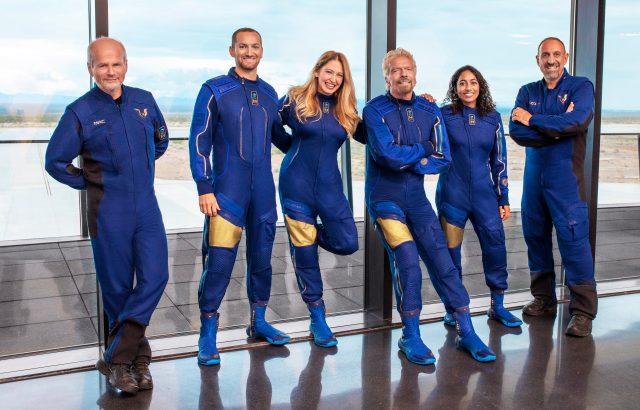
About an hour after the flight, Sir Richard and the other newly minted “astronauts” who had just flown into space walked on stage beneath the blistering Sun, as the crowd cheered. Branson had invested 17 years of his life and his fortune into reaching this sublime moment. Yes, he’d had a hell of a good time. Yes, the flamboyant showman relished the attention.
But this moment was bigger even than Richard Branson, and he knew it. As Branson sprayed champagne on his fellow crew members and carried Sirisha Bandla piggy back style around the stage, he left the crowd of onlookers with a simple message.
"Welcome,” he said, “to the dawn of the new space age.”
And a very bright dawn it was—not just because he stood in the middle of a desert, in the middle of summer, in the middle of the day.
"really" - Google News
July 12, 2021 at 09:50PM
https://ift.tt/3e8Jsmv
Here's why Richard Branson's flight matters—and, yes, it really matters - Ars Technica
"really" - Google News
https://ift.tt/3b3YJ3H
https://ift.tt/35qAk7d
Bagikan Berita Ini















0 Response to "Here's why Richard Branson's flight matters—and, yes, it really matters - Ars Technica"
Post a Comment